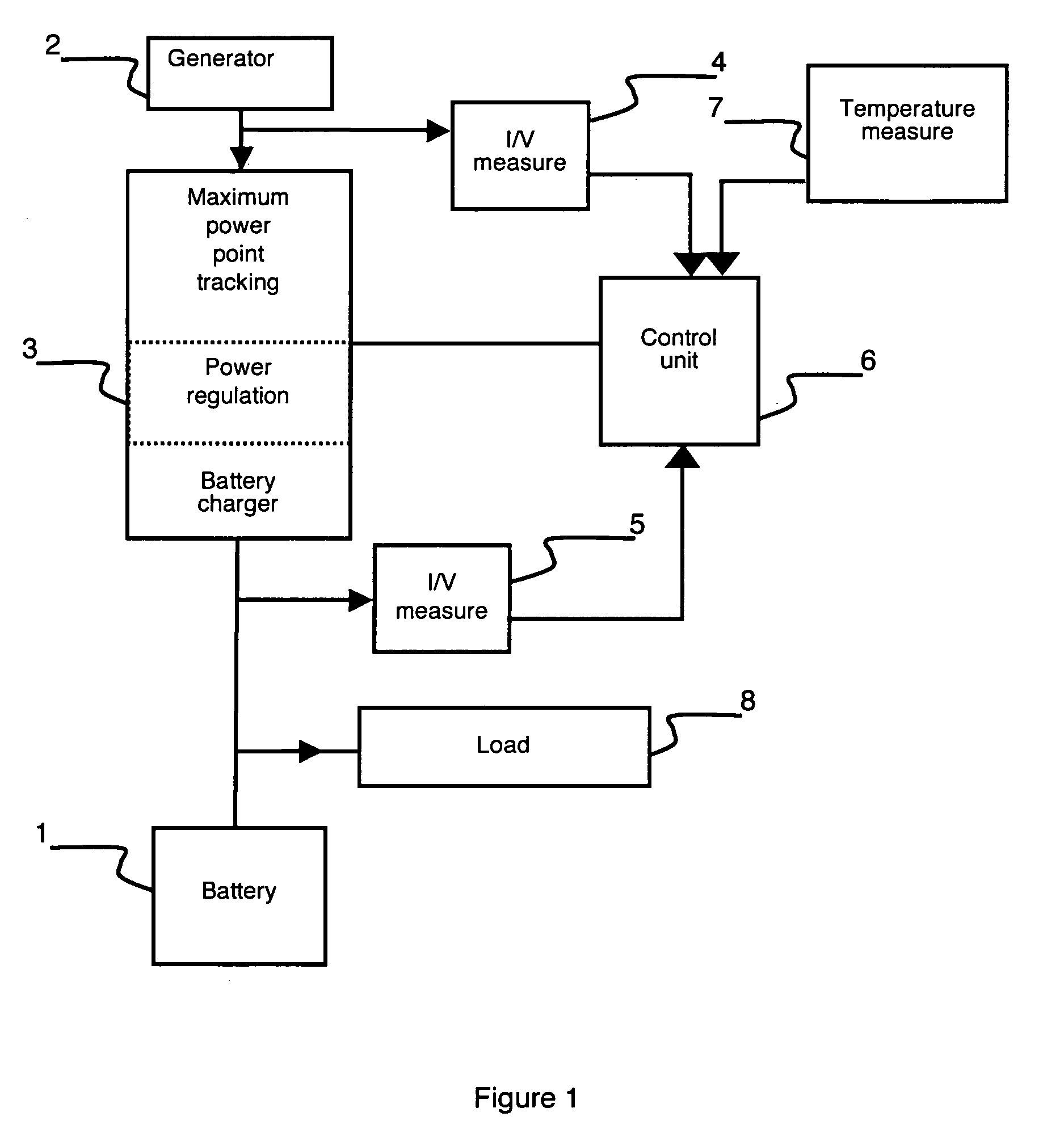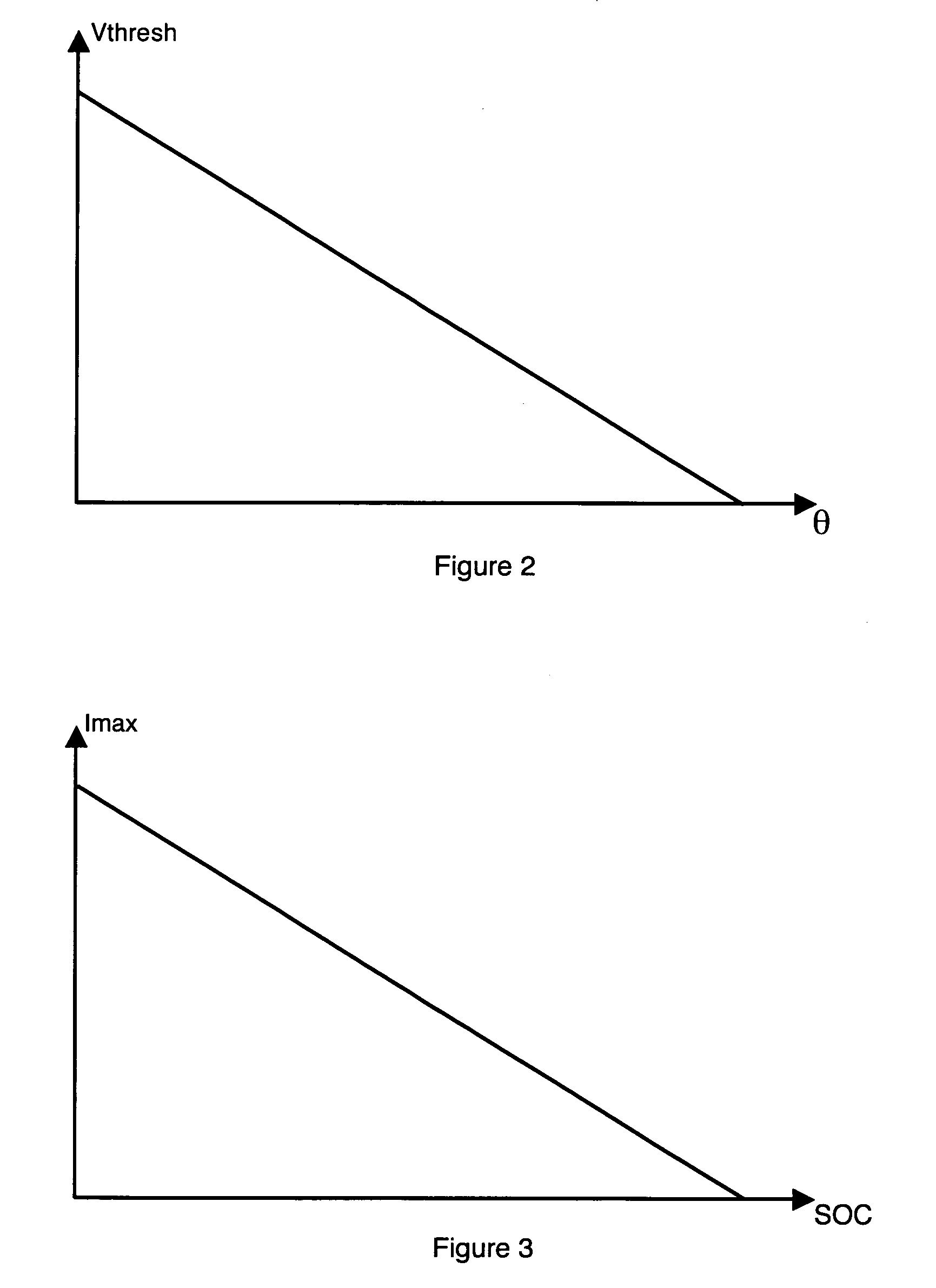Method for charging a battery of an autonomous system
a technology of autonomous systems and charging methods, applied in the direction of secondary cell charging/discharging, electric vehicles, electrical apparatus, etc., can solve the problems of excessive overcharging of batteries, non-optimized end of charging criteria, and insufficient battery charging. achieve the effect of optimizing the battery charging process, limiting internal degradation phenomena, and preserving optimum safety
- Summary
- Abstract
- Description
- Claims
- Application Information
AI Technical Summary
Benefits of technology
Problems solved by technology
Method used
Image
Examples
Embodiment Construction
[0022]As illustrated in FIG. 1, the autonomous system comprises at least one battery 1 acting as power storage element, a power generator 2, and a power regulator 3 connected between the generator 2 and the battery 1. Measuring circuits 4 and 5, for respectively measuring the voltage and current at the output of the generator 2 and at the terminals of the battery 1, are connected to a control unit 6, also connected to the power regulator 3. A temperature measurement circuit 7 is also connected to the control unit 6. A load 8 is conventionally supplied with power by the battery 1.
[0023]The temperature measurement circuit 7 preferably comprises at least one ambient temperature measurement sensor and a measurement sensor of the temperature of the battery 1. The control unit 6 can then calculate the temperature difference between the battery 1 and its environment.
[0024]The power generator 2 is for example a photovoltaic panel or a micro-hydraulic or wind power device.
[0025]The power reg...
PUM
 Login to View More
Login to View More Abstract
Description
Claims
Application Information
 Login to View More
Login to View More - R&D
- Intellectual Property
- Life Sciences
- Materials
- Tech Scout
- Unparalleled Data Quality
- Higher Quality Content
- 60% Fewer Hallucinations
Browse by: Latest US Patents, China's latest patents, Technical Efficacy Thesaurus, Application Domain, Technology Topic, Popular Technical Reports.
© 2025 PatSnap. All rights reserved.Legal|Privacy policy|Modern Slavery Act Transparency Statement|Sitemap|About US| Contact US: help@patsnap.com



